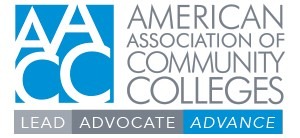Due to the structured nature of registered apprenticeship programs and the rigorous standards set by the U.S. Department of Labor (DOL), implementing effective management systems is essential for tracking required documentation and ensuring program success. AACC strongly recommends that colleges utilize centralized systems to monitor apprenticeships to maintain compliance and facilitate continued expansion in collaboration with industry partners.
Effective management systems allow colleges to:
- Ensure compliance with federal and state apprenticeship regulations.
- Streamline tracking of apprentice progress, employer engagement, and faculty involvement.
- Enhance reporting capabilities for funding, employer partnerships, and student success metrics.
- Improve efficiency in program administration, outreach, and marketing efforts.
Below are key metrics that must be tracked (as required by the DOL) and recommended tools for managing this information
Demographic Data System and Achievement Data System for Apprentices: Basic data system could be managed by a spreadsheet program, such as Excel or Google Sheets, or proprietary software. Most information can be found in your college LMS system, such as Banner, PeopleSoft, or Workday.
Instructor Data System: A central place where keep track of information needed at your college such as number of courses a faculty member taught, when the course was taught, amount paid, if that faculty conducted tutoring, etc. This is in addition to the room schedule system.
Company Data System: Basic data system specific for companies hiring apprentices that could be managed by a spreadsheet program. A central place to track information related to each company with an apprentice such as contact person in HR, contact person in accounts payable, number of apprentices, mentor contact information, date of visit to talk with company mentor and apprentice, etc. Some colleges are building customized tracking under programs like Salesforce or HubSpot.
Program Data System: Basic system to keep track of the status of registered apprenticeship programs. This would include when programs are approved, and critical contacts. This document management system should also house all updated versions of all materials, such as yearly program curriculum maps (outlines), weekly course/work schedules, and recruitment materials. It is recommended to implement restricted access controls to maintain document integrity.
CRM System for Outreach Team: A customer relationship management (CRM) system is a tool that provides a central place where you can store customer and prospective customer contact information, relationship status updates, and share it with colleagues. In this case, the “customer” would be potential apprentices/students for existing apprenticeship programs. Once this is in place, you can track the history of all your interactions you have with those customers: phone calls made, emails sent, meetings held, presentations delivered, enquiries received.
Marketing Data System: Basic data system that allows institutions to track and evaluate the effectiveness of promotional activities and industry engagement specific for apprenticeship outreach activities. A spreadsheet program, such as Excel or Google Sheet, can be used to keep track of the number of outings, meetings, Information events such as breakfasts for companies or information sessions for potential apprentices, area association events attended, and ROI for these types of activities.
Perception Data System: Basic data system specific for gathering and analyzing the results of continuous quality improvement (CQI) surveys. Surveys can be done at the end of semesters or annually with stakeholders (companies, instructors, mentors, apprentices and any others) to provide sufficient information for CQI.
